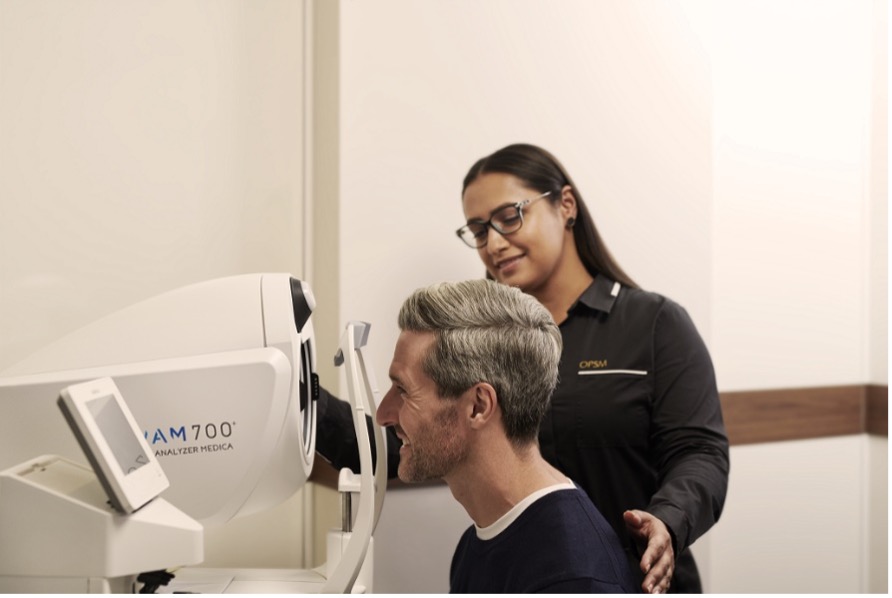Glaucoma is the leading cause of irreversible blindness in Australia. It is estimated that 300,000 Australians have glaucoma, yet only 50% are diagnosed1. Nicknamed the ‘silent thief of sight’, the most common form of glaucoma exhibits little to no symptoms in the early stages of the disease and can only be detected through a comprehensive eye test (2).
With over 8 million Australians not having regular eye exams, ExtrasJar exclusive optical partner OPSM is urging Australians to get their eyes tested this World Glaucoma Week (12-18th March) (2).
Elizabeth Kodari, optometrist at OPSM says, “Early detection through regular eye tests is key to helping minimise vision loss with Glaucoma”.
“Glaucoma causes a slow painless loss of your peripheral or side vision. As the disease progresses these blind spots enlarge resulting in ‘tunnel vision’. It is at this advanced stage where patients may begin to develop symptoms” Kodari says.
Although there is currently no cure for Glaucoma, the good news is early detection and treatment can help minimise vision loss (3). OPSM shares with us their eyecare tips to help minimise Glaucoma onset.
Know the Risk Factors
Although anyone can develop Glaucoma, there are several factors that can increase your risk (3, 4). These factors include:
- Family history
- Asian or African descent
- Age
- Diabetes
- History of cortisone or steroid use
- Injury to the eye
- High myopia or short sightedness
- High or low blood pressure
“Family history is a major risk factor. If you have a first degree relative with Glaucoma, you are 10 times more likely to develop the condition (5)” Kodari says.
Schedule Regular Eye Tests
Comprehensive eye tests with your local optometrist can help detect glaucoma in its early stages, which may help minimise further vision loss (3).
OPSM recommends adults should visit their optometrist at least once every 24 months to help maintain and maximise their eye health *.
“You may require more frequent eye tests if you are at high risk of developing glaucoma. Speak to your local optometrist about when is right for you” Kodari says.
Protect Your Eyes
Traumatic glaucoma is a type of secondary glaucoma that occurs from eye injuries. It can develop at the time of the injury or years later, hence why regular eye tests are so important (5).
Eye injuries are currently the leading cause of monocular blindless worldwide6. With up to 90% of injuries preventable, protecting your eyes is critical (6).
“You can help minimise the risk of developing traumatic glaucoma by wearing adequate safety protective glasses, whether it is at work or when completing DIY projects around the house. Our optometrists will be able to help advise which safety glasses maybe right for you” Kodari says.
To make an appointment or locate your nearest OPSM optometrist visit opsm.com.au
*OPSM recommends that you schedule regular visits with your optometrist based on your eye health needs
- Prevalence of glaucoma in the Australian National Eye Health Survey. British Journal of Ophthalmology 103 (2019)
- Glaucoma. Could you be one of the undiagnosed cases. Good Vision For Life (2019).
- Glaucoma: What’s new and what do I need to know? Harvard Health Publishing (2021).
- NHMRC Guidelines for the screening, prognosis, diagnosis, management and prevention of glaucoma (2010).
- Risk Factors for Glaucoma. Glaucoma Australia
- Traumatic Glaucoma- Glaucoma Research Foundation (2019).
- Safety Eyewear: Reducing the Impact, Hoskin Annette, The Luxottica Institute of Learning



